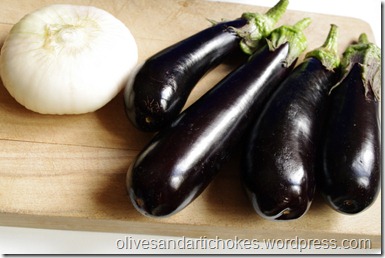Most of these tomatoes went in another batch of ratatouille, destined for the freezer, with courgettes, peppers and onions picked from the garden at the same time.
We’re eating a lot of green peppers of different varieties, the biggest and best coming from plants of an unidentified Spanish variety grown from seed given to us by our neighbours in the next garden last summer. Some of the green peppers are now starting to turn red, especially the paprika peppers (in French conveniently there are two words, poivron meaning the vegetable and piment meaning the spicy paprika or chilli peppers). We grow two varieties of the latter: a chorizo pepper originally given to us by a friend who lives in Navarra from which we’ve saved seed for the last few years, spicy rather than hot; and piment d’Espelette, a paprika pepper from the village of Espelette in the French Basque country which is slightly hotter but still nothing like chilli. Since we’ve saved seeds for a couple of years from these peppers they probably shouldn’t be called Espelette as the peppers from that village and surrounding area have been awarded l’appellation d’origine contrôlée and like wine must come from a particular area. Even the extra plants that we put in pots on the balconies and window sills have peppers that are turning red now and I shall soon be drying strings of these to save for winter.
One of our piments d’Espelette turning red on the kitchen window sill (above) and (below) chorizo peppers on an upstairs balcony.
And more aubergines…..
We put most of the aubergines we’d picked into the ratatouille, but left out a few so that Lo Jardinièr could make one of his specialities – aubergine fritters with local garrigue honey, his version of a dish we ate in a very good restaurant in Córdoba a few years ago. To make the batter he uses half ordinary baking flour and half chickpea flour, a little salt and olive oil and enough water to mix, then dips the aubergine slices in the batter and fries them in olive oil. When they are on the serving dish he pours honey over them all (heated to thin it if it has solidified) – and they are absolutely delicious!

































